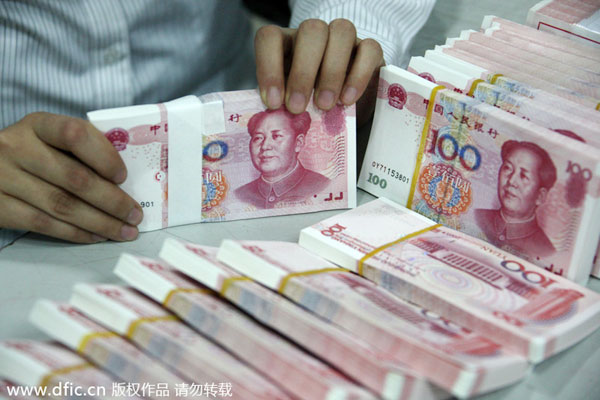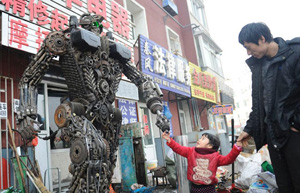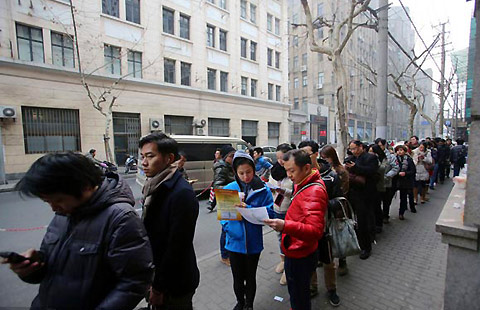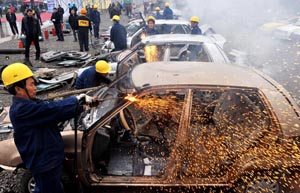PBOC joins shift to boost growth
By Chen Jia (China Daily) Updated: 2015-02-06 07:32
 |
|
A clerk counts yuan bills at a bank in Huaibei, East China's Anhui province. [Photo/IC] |
As the dollar becomes stronger and domestic property prices slump, China will see huge outflows of capital, much higher than the level seen in the last quarter of 1998, amid the Asian financial crisis. Capital outflows excluding foreign direct investment may have reached $160 billion in the fourth quarter of 2014, accounting for more than half of the full-year amount.
The RRR reduction is expected to inject as much as 600 billion yuan into the banking system, in order to offset the large capital outflows.
Xu Hongcai, a senior economist at the China Center for International Economic Exchanges, a government think tank, said: "It is not right to say that China has joined the global 'currency war'. But policymakers should pay more attention to the recent cross-border capital flows and exchange rate fluctuations before they take further steps to stabilize growth.
"We expect the major economies to improve macro policy communication and cooperation to prevent large debt crises and financial fluctuations in the global markets."
According to estimates from the Economist Intelligence Unit, the dollar may continue to appreciate in the next 18 months, and the average dollar-to-euro exchange rate is likely to be 1:1.08. If the US maintains a relatively tight monetary policy, more capital flows from the emerging markets to the US may be seen in the coming months, it said.
Wang Tao, chief economist in China at UBS AG, expects the PBOC to make further cuts to the RRR, especially if the capital outflows continue and the domestic liquidity is still constrained.
Song Yu, an economist with Goldman Sachs Group Inc, said that the government may allow the renminbi to depreciate against the dollar to ease pressure on export growth.
- Apple narrows market share gap with Xiaomi
- China can help world with infrastructure experience and investment: economist
- Alibaba's Ant Financial to buy 25% of India's One97
- China's RRR cut not start of strong stimulus
- China, Maldives launch feasibility study on FTA
- China sees difficulty in bloated steel industry in 2015
- China Telecom eyes 100m 4G customers in 2015
- China, Argentina to jointly build nuclear power plant in Argentina

















